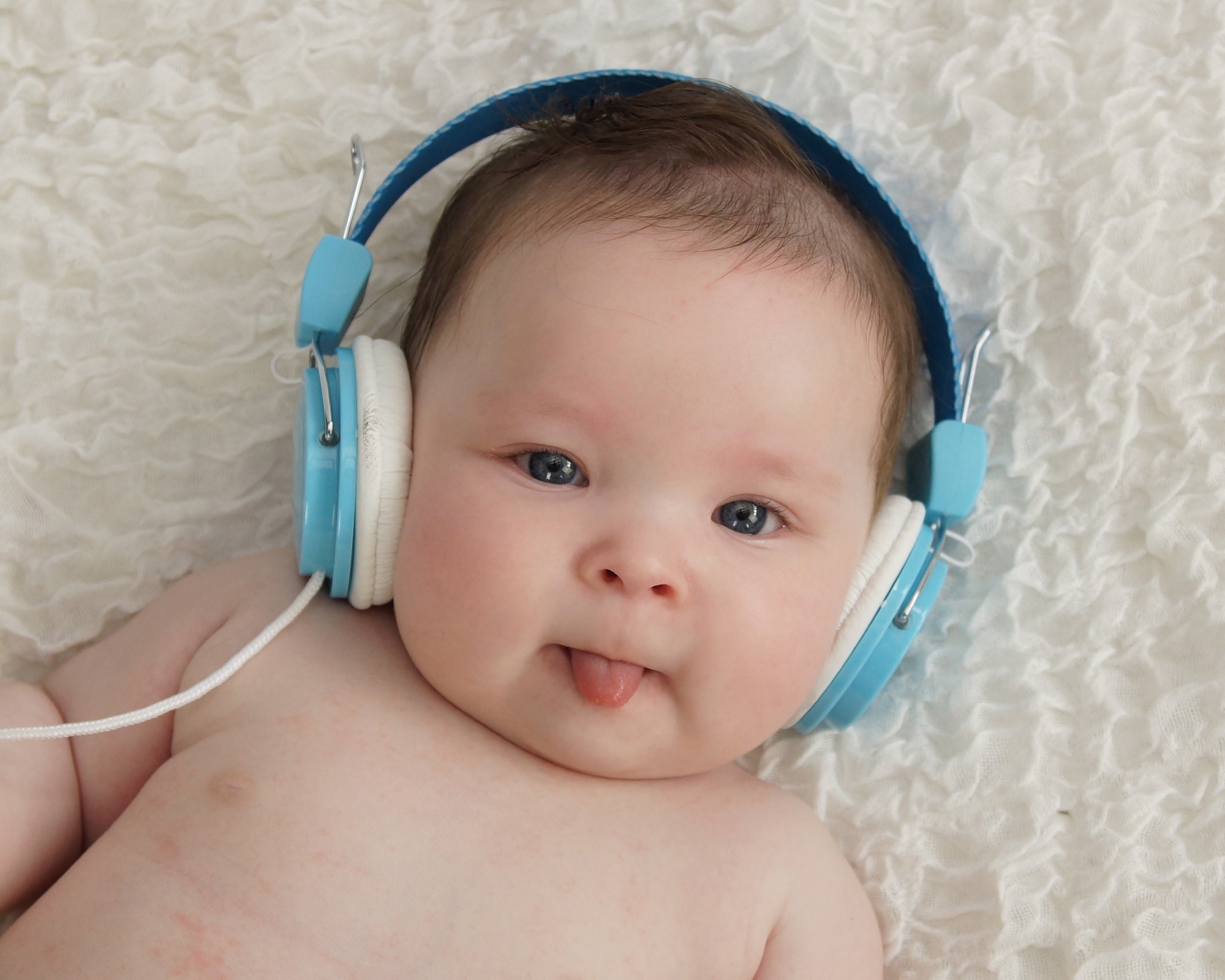In a recent article published in Nature, researchers investigated the early maturation of sound duration processing, a crucial auditory temporal feature.
Study: Early maturation of sound duration processing in the infant’s brain. Image Credit: Sarahbean/Shutterstock/com
Background
The manner in which sound changes over time is one of the primary features of auditory information. Thus, the perception of various timelines depends on information integration across time.
The sound duration processing capacity is important at a very young age since the foundation of primary auditory perception functions like language and music acquisition and object perception relies on it.
According to neurophysiological studies, neurons in the primary and closely associated auditory areas have complicated spectro-temporal receptive fields that participate in auditory characteristics encoding over various timescales.
Nevertheless, despite their significance, the mechanisms underpinning the processing of auditory temporal characteristics remain poorly understood.
About the study
The current study evaluated the earliest processing stages of a crucial auditory temporal aspect, sound duration. The researchers analyzed duration-sensitive auditory event-related brain potentials (ERPs) waveforms and their sources to determine their developmental variations between four and nine months.
They compared ERP and their neural generators produced by noises and tones of various duration among four to nine-month-old infants.
Study participants were enrolled as a part of a larger longitudinal investigation that determined the significance of child-directed speech in speech development.
However, the team focused on two distinct age groups of healthy infants: 1) 64 four-month-old infants comprising 20 males and 44 females, and 2) 63 nine-month-old infants comprising 19 males and 44 females. Further, informed consent was acquired from parents.
The study was carried out in full compliance with the Declaration of Helsinki and all relevant international and national laws and was approved by the United Ethical Review Committee for Research in Psychology (EPKEB), Hungary.
The electroencephalogram (EEG) source activity can be reconstructed with greatly improved reliability since age-appropriate structural anatomical templates are available now. The present research took advantage of this potential by reconstructing the ERP waveform sources responsive to sound duration in four- and nine-month-old infants.
The researchers selected four- and nine-month-old infants because these age groups demonstrate significant turning points in the evolution of ERP morphology. Equally probable long (300 ms) and short (200 ms) sounds were randomly delivered to infants. Subjects were presented with four kinds of sound varying in sound quality (harmonic tones vs. white noise) and duration (200 vs. 300 ms).
Results
The study revealed that the brain of both four- and nine-month-old infants was sound duration-sensitive, as indicated by ERPs produced by short, isolated sounds. The team discovered that for both noise and tones segments, the responses of four and nine-month-old infants varied throughout a comparatively wide time range (between 400 and 780 ms).
Indeed, they found that posterior activity of auditory brain networks distinguished nine from four months, even if latencies were almost the same among these age groups.
In addition, the scalp-recorded waveforms and the related source activity showed maturation impacts. Both scalp-recorded ERPs and the associated source activity were spatially more confined between four and nine months of age.
More focal distribution among primary and secondary auditory areas was visible from the source maps in nine compared to four-month-old subjects.
The principal location of the sound duration-sensitive ERP generators was the ventral frontotemporal auditory pathway, together with activity in other important regions implicated in language processing.
The resemblance between the scalp-recorded ERP morphologies of four- and nine-month-old infants was a somewhat unexpected result. A more complex picture emerges from the underlying generators.
The arrangements of sound duration-sensitive generators were approximately similar in both age groups. Nonetheless, the exception was closer to the primary and secondary auditory cortices, showing an activity reduction, which may be a sign of brain maturational processes.
Conclusions
The study findings showed that the sound duration modulated two temporally distinct ERP waveforms. Furthermore, the generators of these waveforms were primarily found in the primary and secondary auditory regions and other language-associated areas.
The results reveal significant developmental variations between four and nine months, partially reflected by scalp-recorded ERPs but visualized in the underlying generators in a much more nuanced manner. The research also supports the viability of using anatomical templates among developmental populations.
In sum, the present study offers fresh insight into the development of sound duration processing, a crucial temporal component. The results of ERPs align with those from earlier research.
The more reliable source reconstruction provided by the recently published infant structural anatomical templates revealed novel perspectives into the generators behind the development of sound duration and their processing.
Additionally, the study results support the postulation of the developmental and functional importance of this neural activity. Undoubtedly, additional research is needed to confirm and clarify these initial hypotheses.
